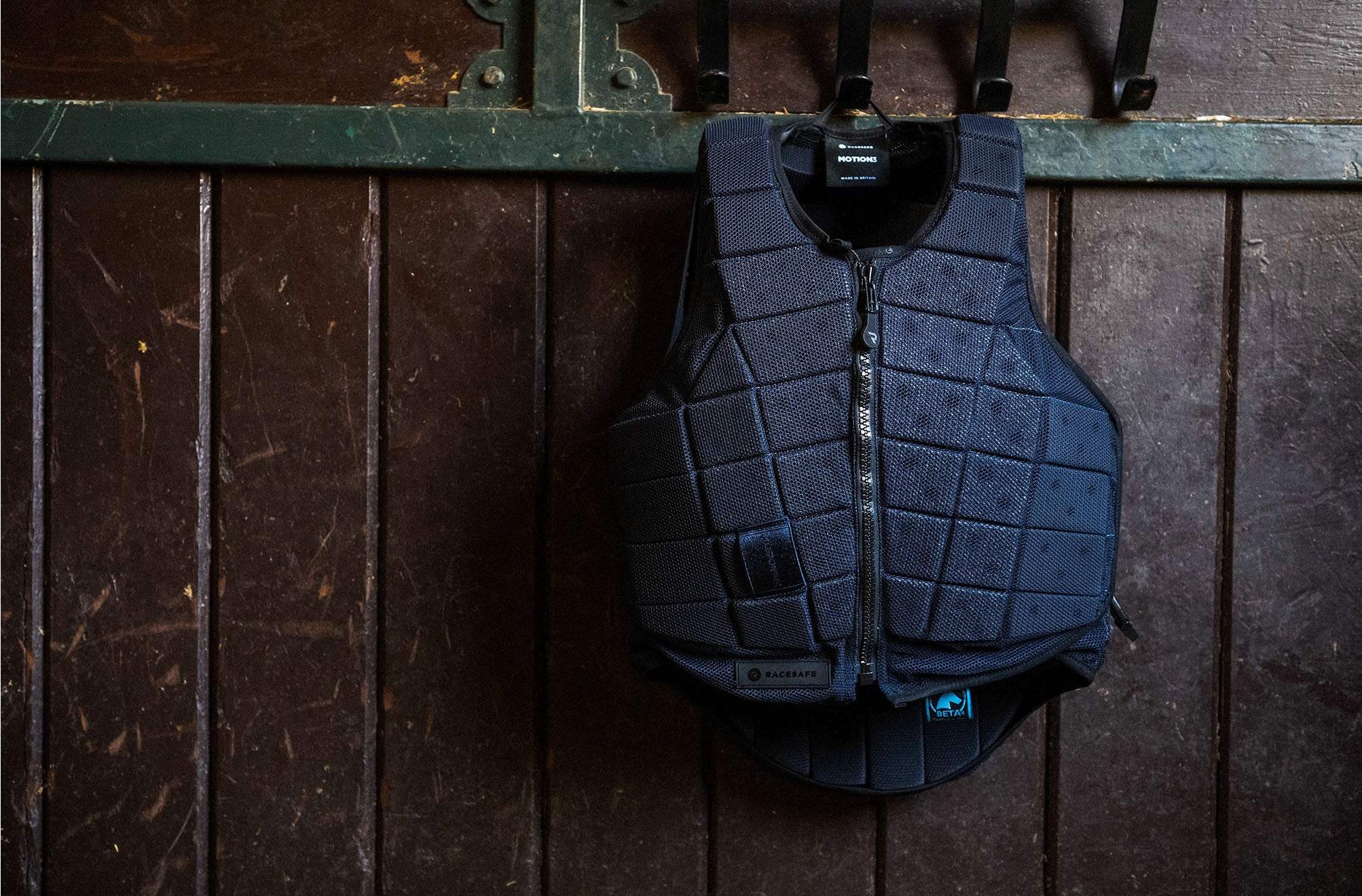When should you think about replacing your body protector?
Many riders rely on their body protector to keep them safe, whether hacking, jumping, eventing or racing. But how do you know if it’s still doing its job correctly or if it's time to look at updating?
1. Have you had your current body protector for more than 3-5 years?
The impact materials in your body protector are carefully constructed and combined to absorb impact forces across different types of falls. Beyond 3-5 years, there is gradual degradation of these materials. The rate will depend on a number of factors, including its storage and number of falls, but it may no longer offer the intended impact performance or level of protection.
It's also important to mention that we are constantly innovating and improving our body protectors, so older models are likely to mean you're missing out on the latest features like enhanced comfort and breathability. Can we recommend trying our latest Motion3 body protector to see what we’re talking about!
2. Does it have a BETA 2018 (Level 3) label?
The safety standards were revised in 2018, and current Level 3 models certified to the latest BETA standard carry a turquoise label. All Racesafe body protectors made since October 2018 (when the standard was released) are certified to and carry the BETA 2018 label.

From 2024, nearly all organisations, including British Eventing, British Riding Club, The Pony Club, and Eventing Ireland, will no longer allow you to compete in a body protector that is not certified to the 2018 BETA level 3. Find out more about safety standards.
3. Does it fit you properly?
Having a body protector that fits correctly is incredibly important from a coverage and protection point of view. It also determines how comfortable it is and whether you can move properly.
Watch our video guide on how to check how your body protector should fit- How to check if your Body Protector fits correctly
If any of the below are true for you, then your body protector doesn't fit or protect you correctly:
- Your ribs aren't covered
- You can't move freely in the saddle without the back length interfering.
- It's loose or moves when you’re riding
- You find it tight or restrictive when riding, even on the loosest adjustment.
In most models, we offer up to 100 size options to make sure we can offer a perfect fit for each rider. Check out the size recommender on each product page and visit one of our stockists for a fitting.
4. Are there are visible signs of wear and tear?
All our body protectors are made at our Northamptonshire factory, and we’re proud of their quality and durability. However, riding is an active outdoor sport, and over time, a certain level of wear and tear is to be expected. However, excessive wear and tear can start to effect the fit and coverage offered.
When not being worn, we suggest your body protector is hung up. Store away from extreme temperatures and extended exposure to direct sunlight. In some cases, where the body protector is less than 5 years old and is in good condition, we can offer a zip repair service. Replacement elastics can also be ordered online.
5. Is there permanent damage after a fall?
Body protectors are designed for repeated use, but heavy or repeated falls can sometimes cause the impact absorption properties within the body protector to deteriorate permanently. Check your body protector for dents after a fall; the foam should return to its original shape within around 30 minutes. If the foam does not expand back or permanently hardens, it is advisable to replace your body protector as the impact absorption will be reduced.
Concerned about your body protector?
If you are thinking that it might be time for a replacement, then you might like to read our body protector buying guide, or you might like to find your nearest stockist to try one of our latest models on.
References
“Effects of body protection vests and experience levels in the prevention of equestrian injuries” Andres et al, 2018. https://bmjopensem.bmj.com/content/4/1/e000426







Leave a comment